Roses & Lilies

Calla Lilies
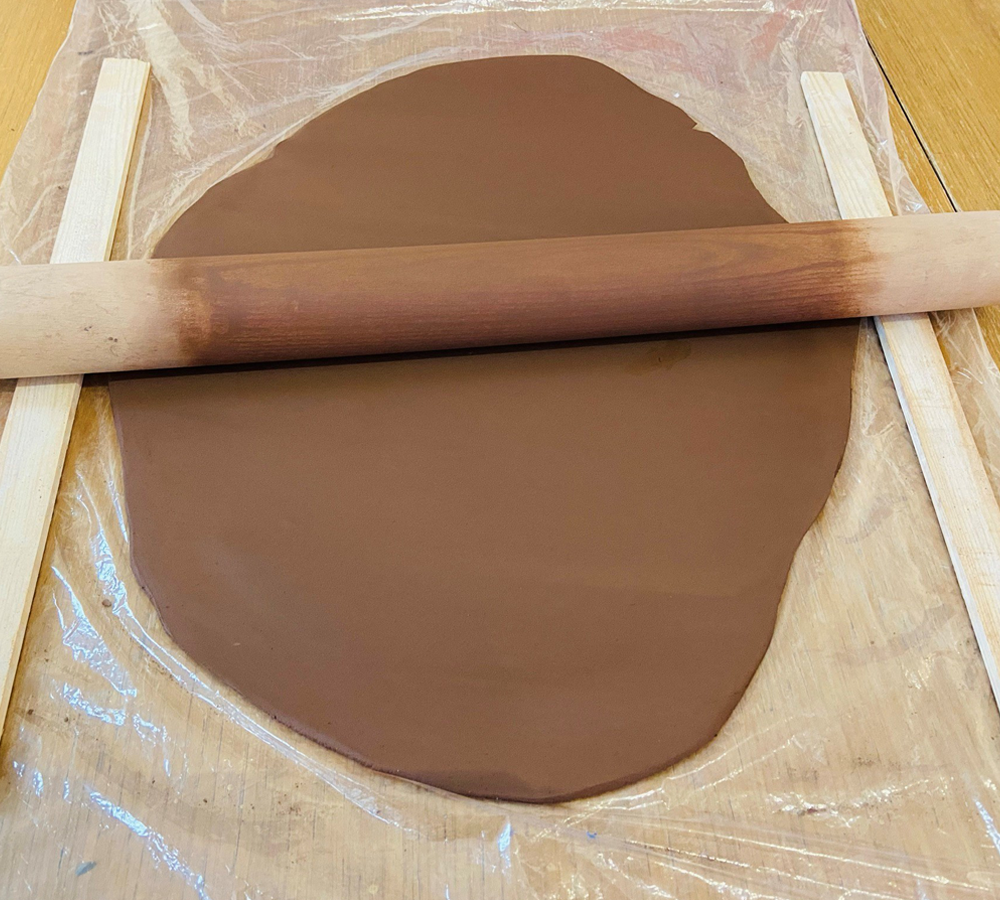
1) Roll out your chosen clay.
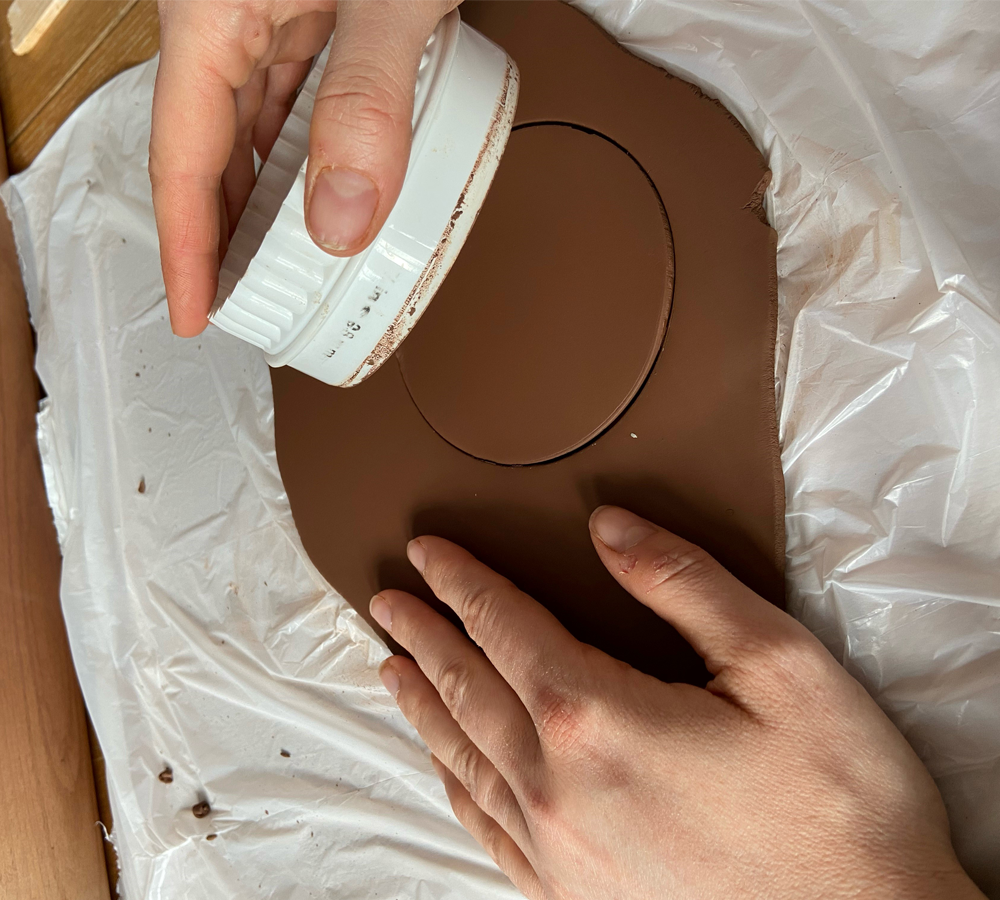
2) Cut out a circle of clay using a large
round cuter.
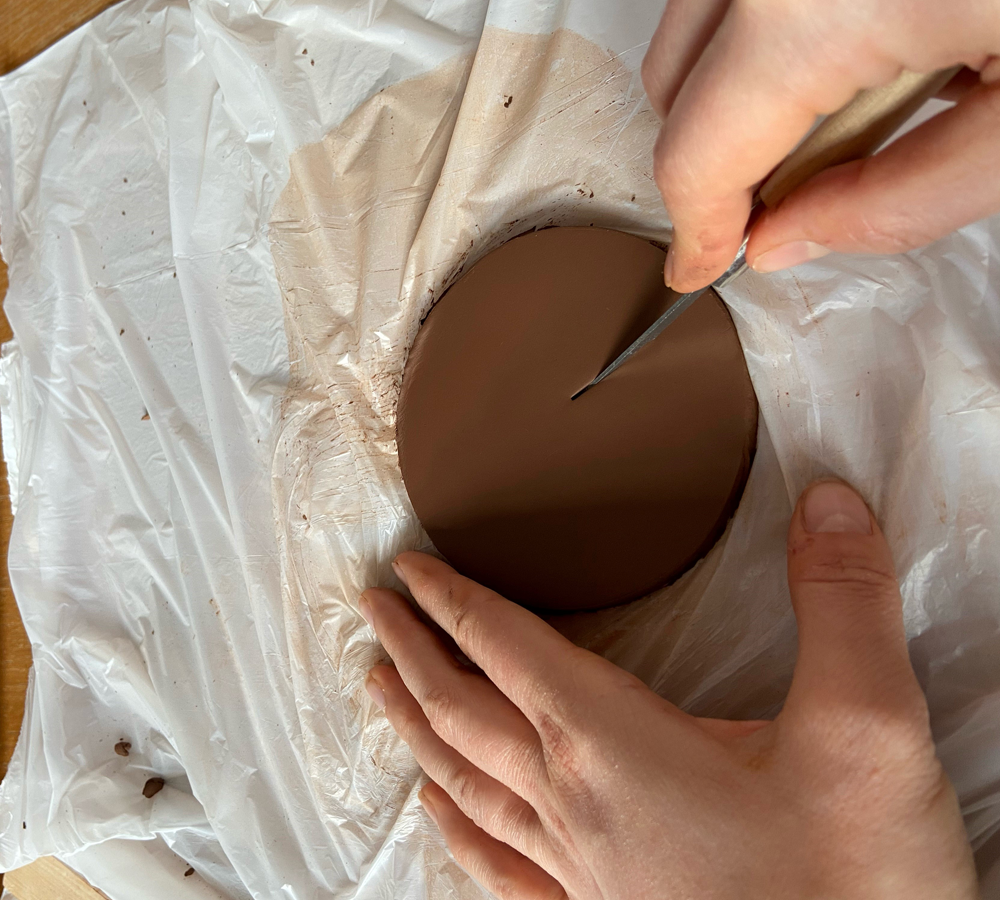
3) Cut a straight line, from just short of the
centre to the outside edge of the circle.
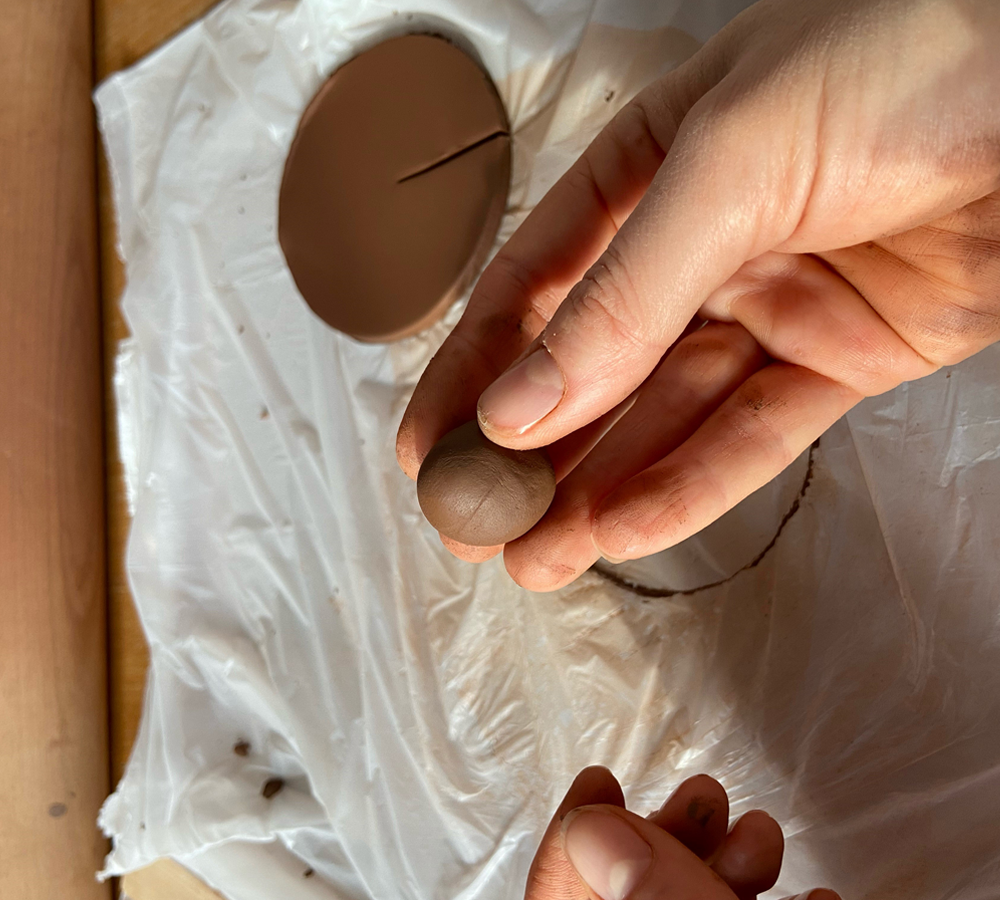
4) Pinch a small amount of clay from the
left over clay and roll into a small ball.
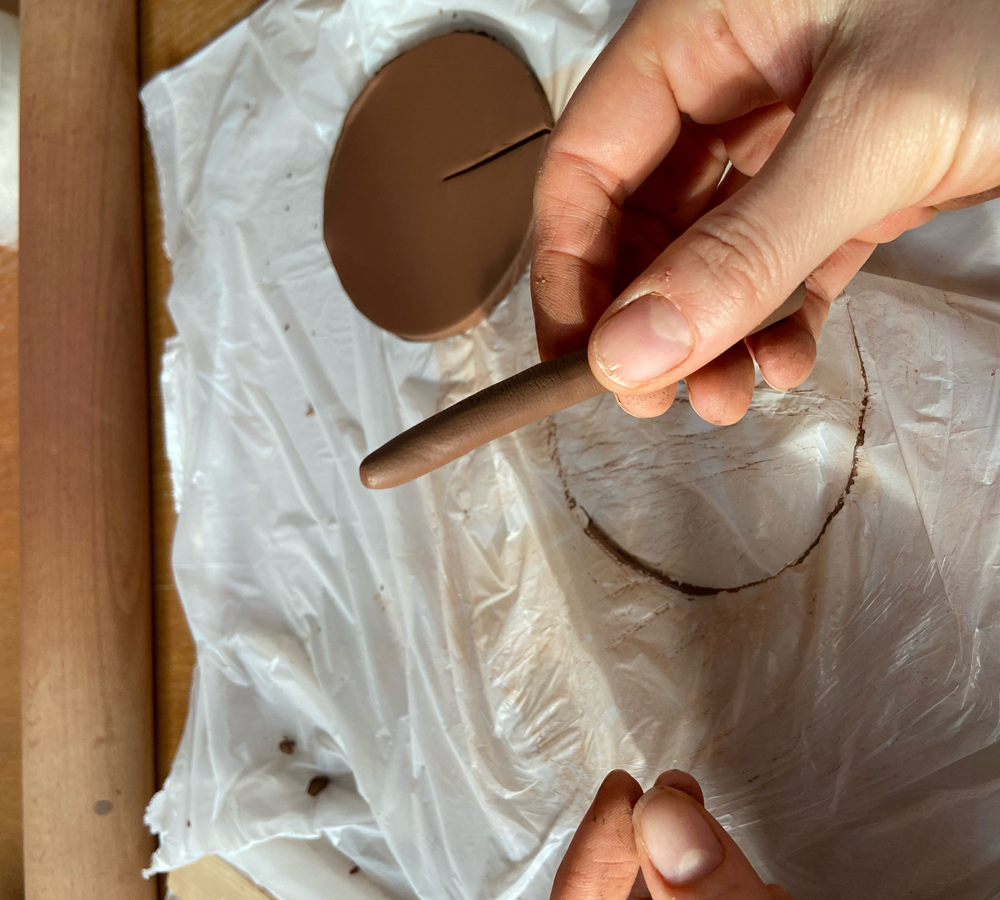
5) Roll the ball into a thin sausage shape;
this will be the centre of your Lilly.

6) Place the sausage in the middle of the
circle.

7) Take one of the split edges and wrap its
point around the base of the sausage.
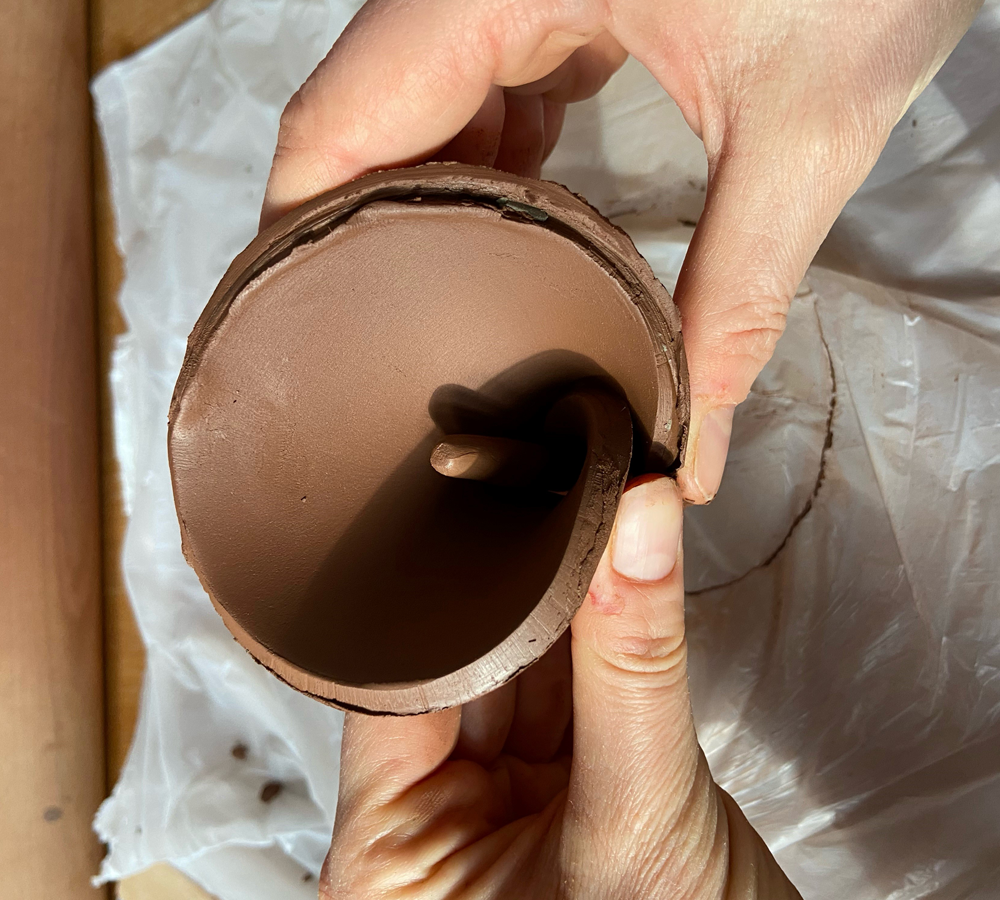
8) Take the second edge and wrap it behind
the first edge.
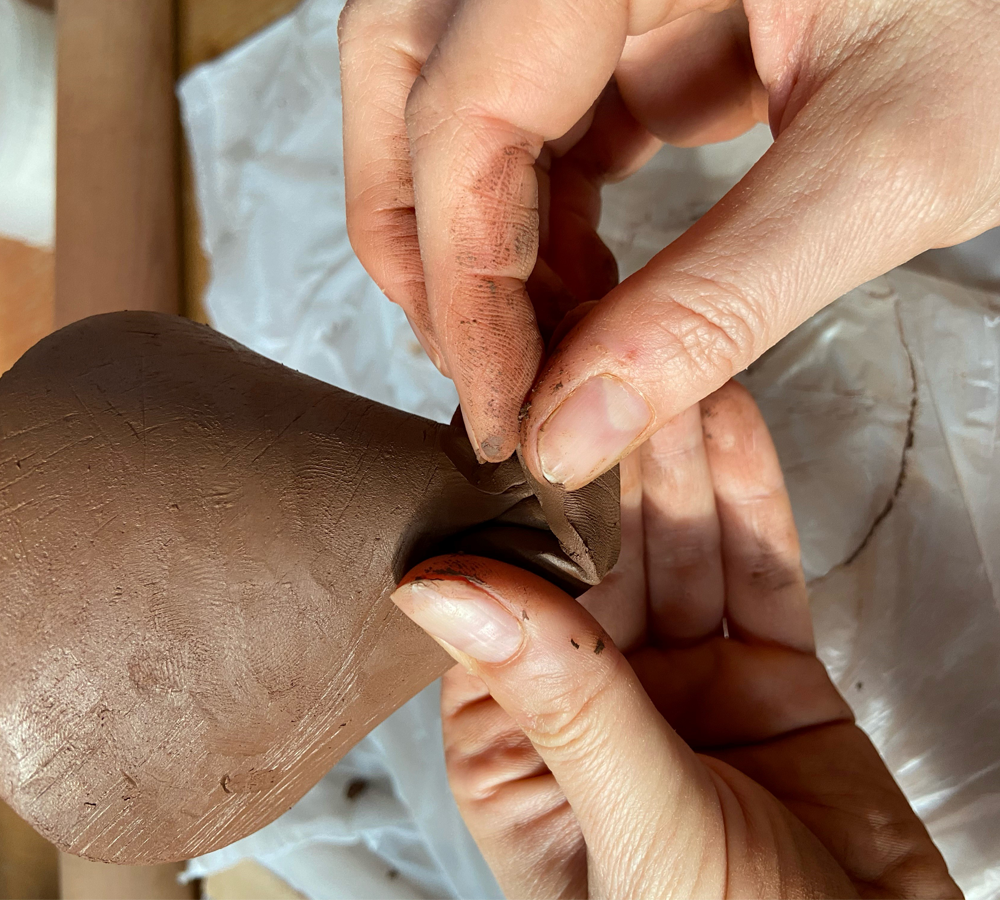
9) Squeeze and smooth the bottom to hold
it all in place.
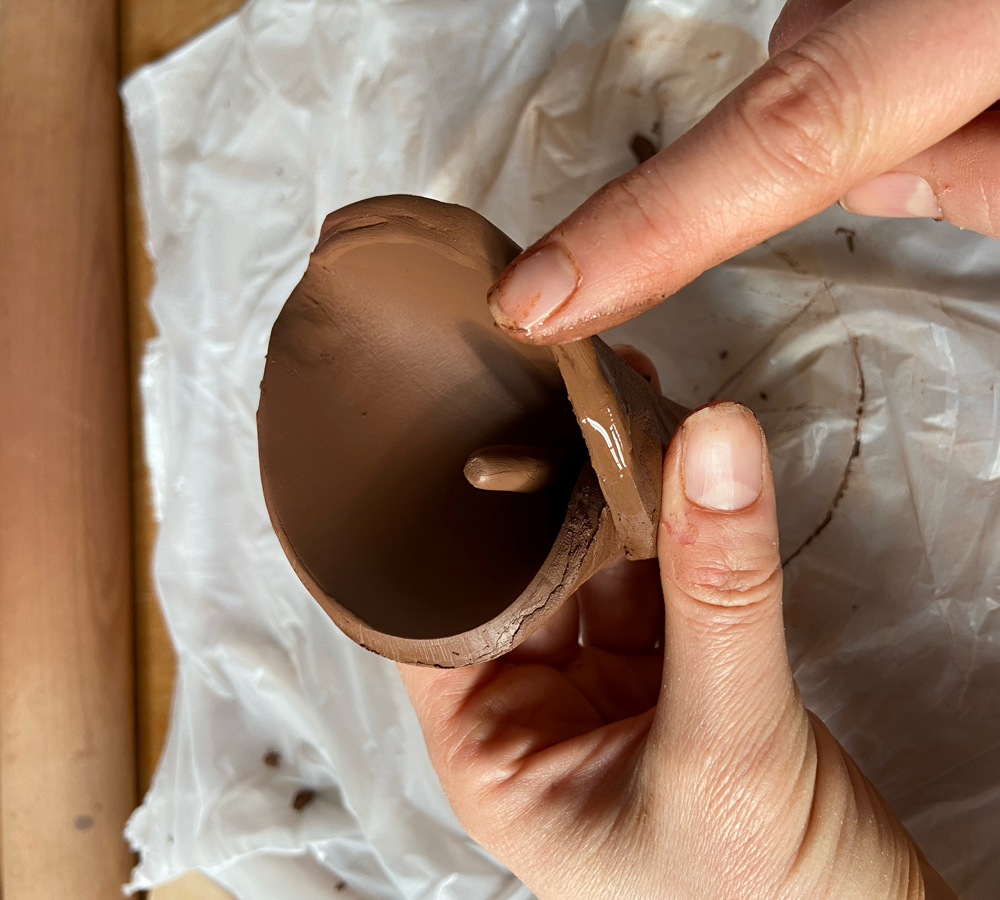
10) Using a wet finger, smooth along the
edge of the flower.
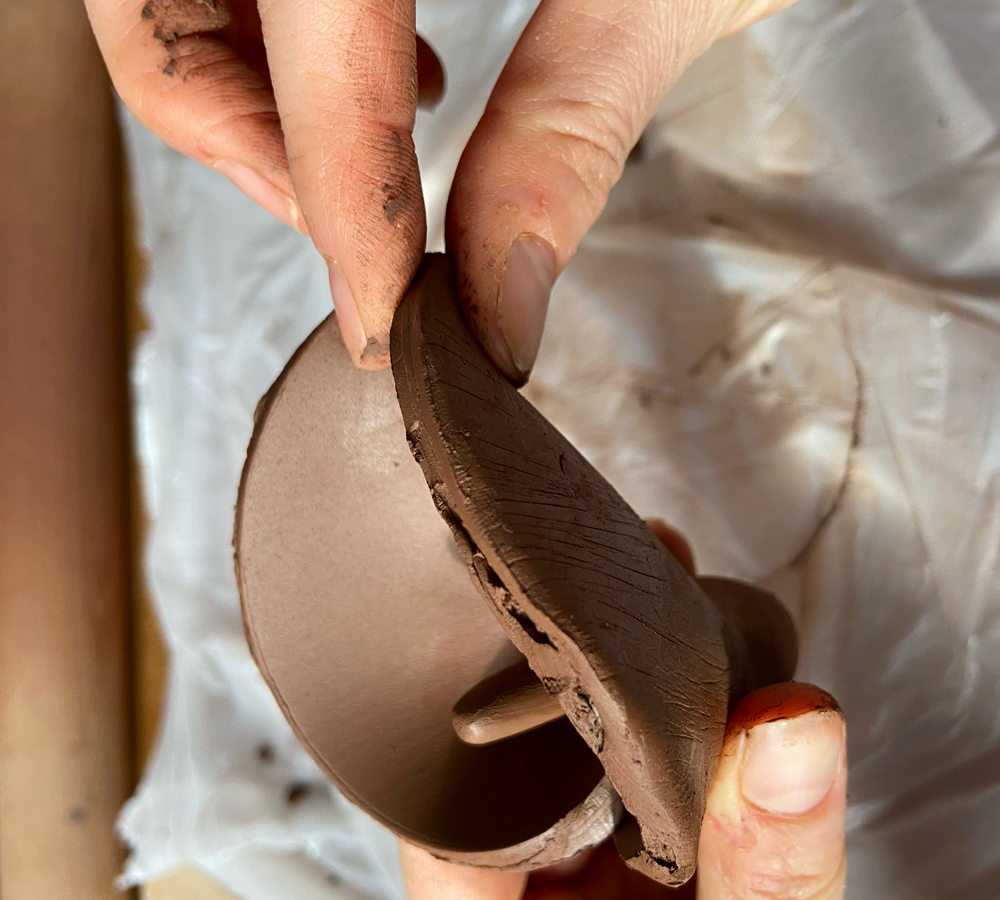
11) Gently push the sides together slightly
and pull out a lip to make the point of the
Calla lily.
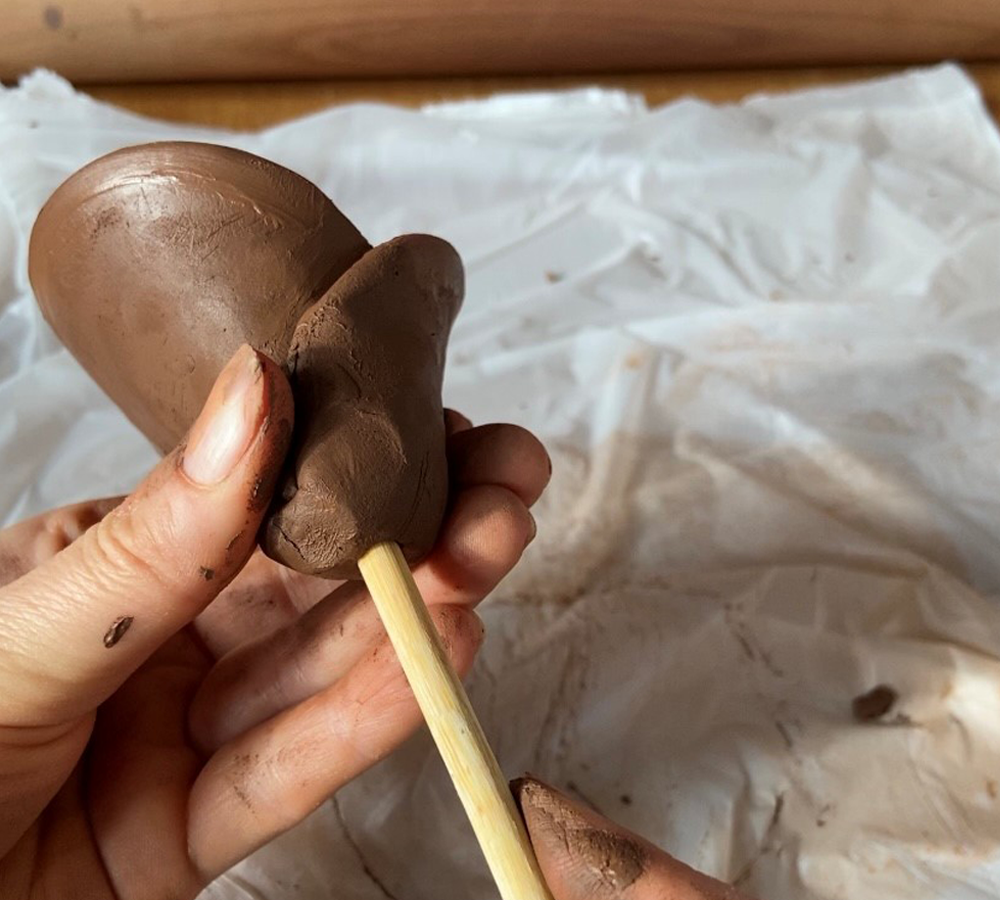
12) Using a wooden dowel or chop stick,
gently push it into the base (take care not
to push to far or it will remove the centre)
and gently smooth the clay down over the
tip of the dowel.
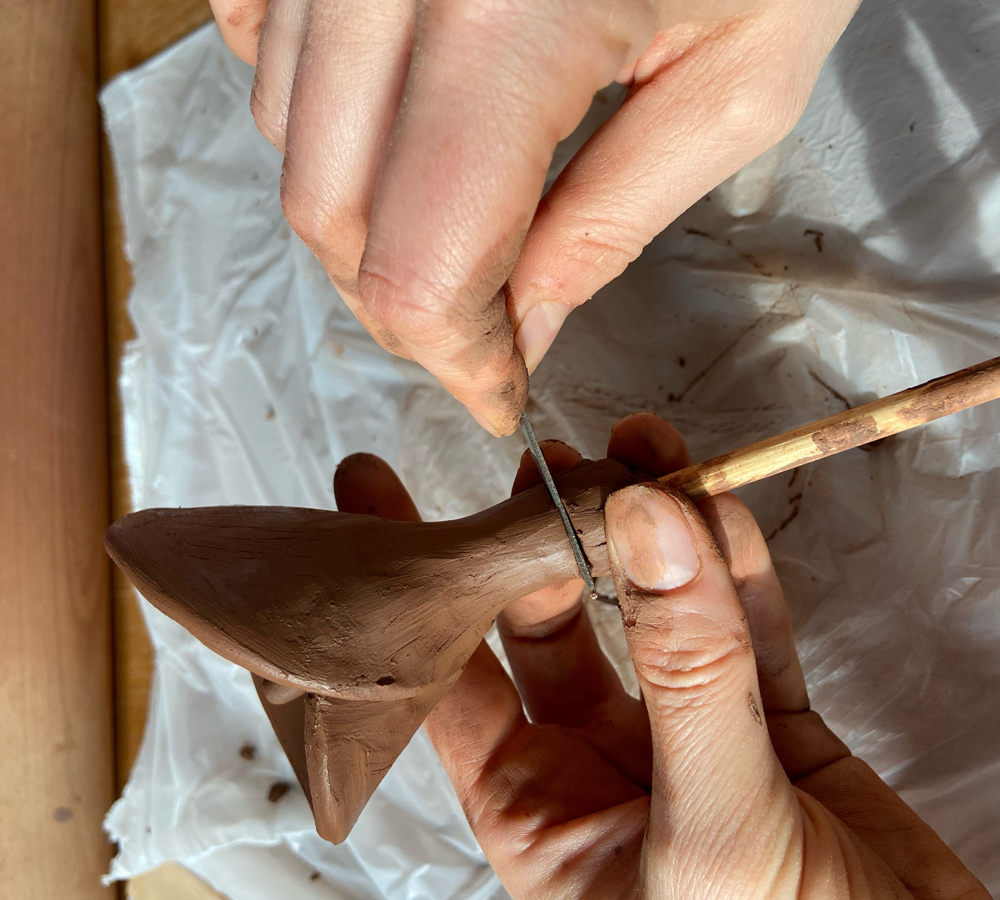
13) Remove the stick and trim the bottom
with a knife.
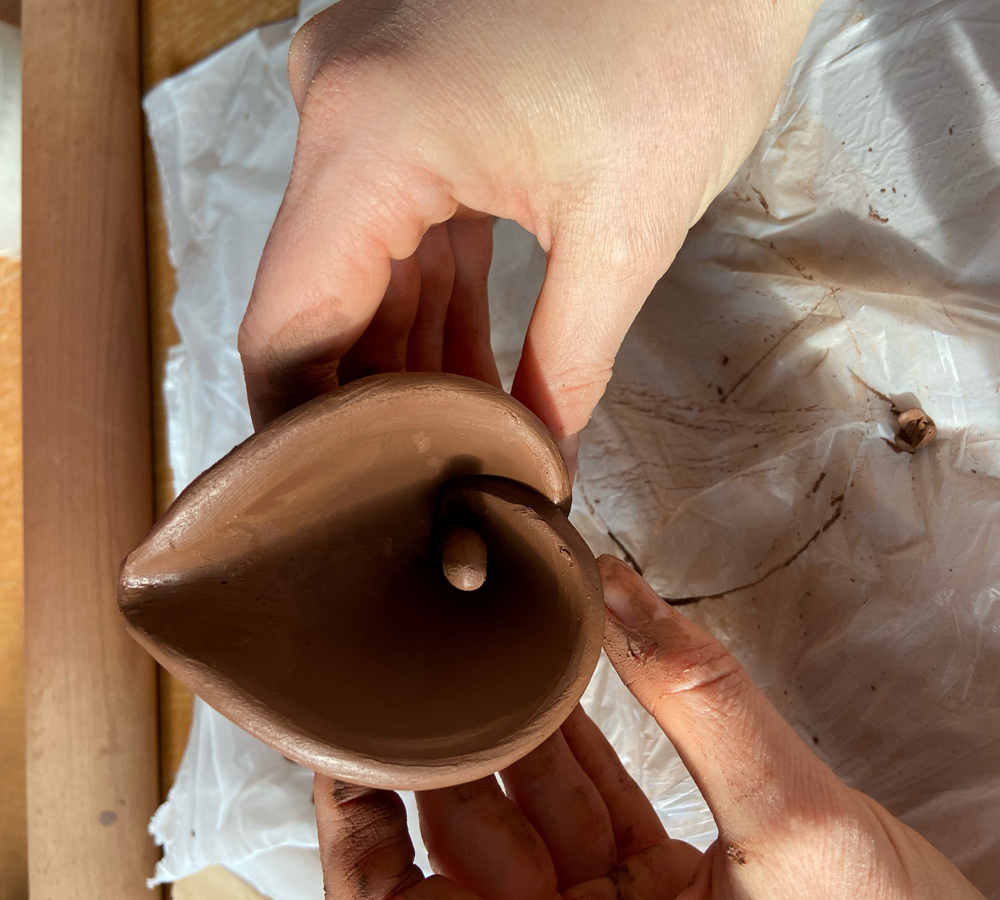
14) Allow to dry and bisque fire to 1100°C.
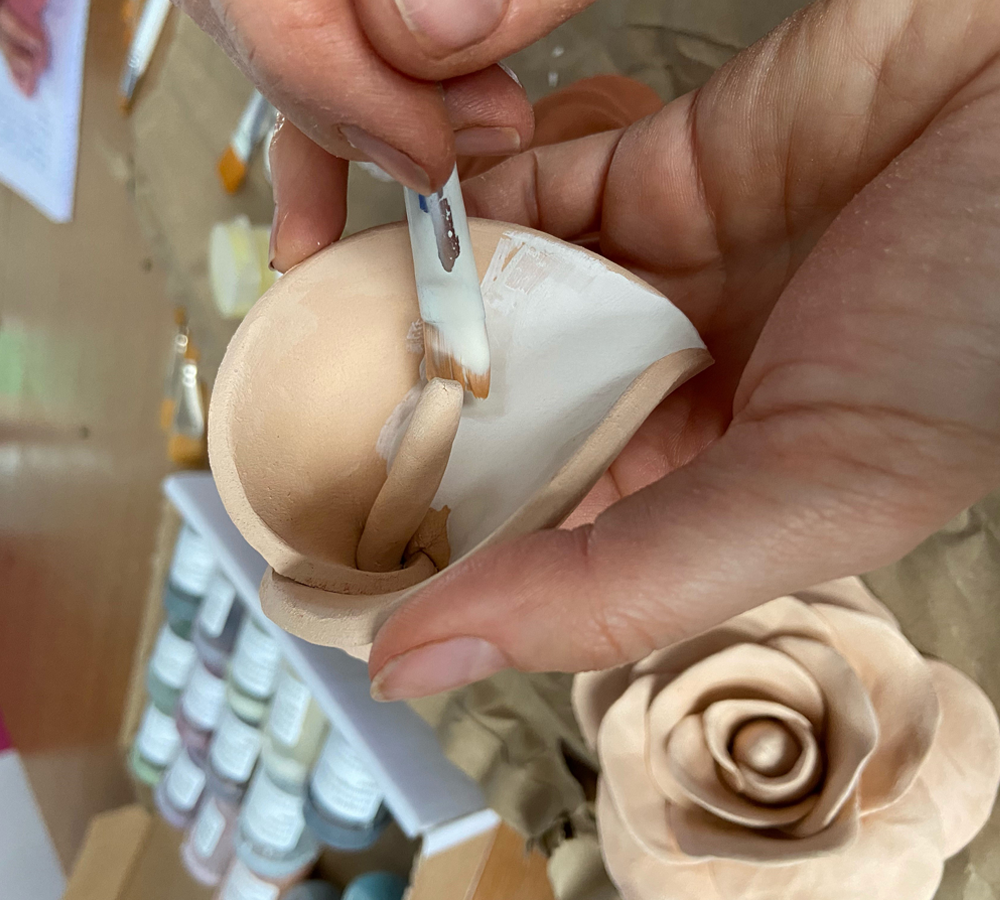
15) Glaze using two coats of Vitraglaze
earthenware glaze.
We used
VitraGlaze Earthenware: White Zircon
VitraGlaze: Earthenware: Sunflower Yellow
Roses
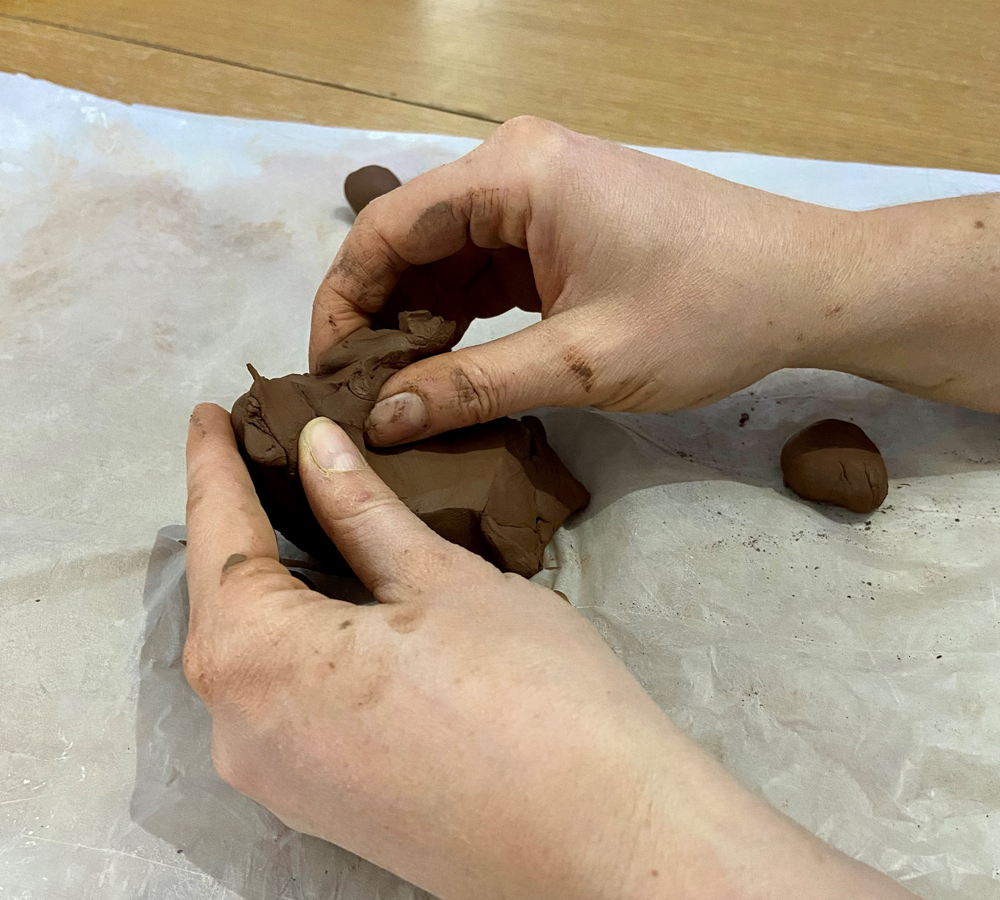
1) Take 15-16 small pieces of clay and roll
into balls
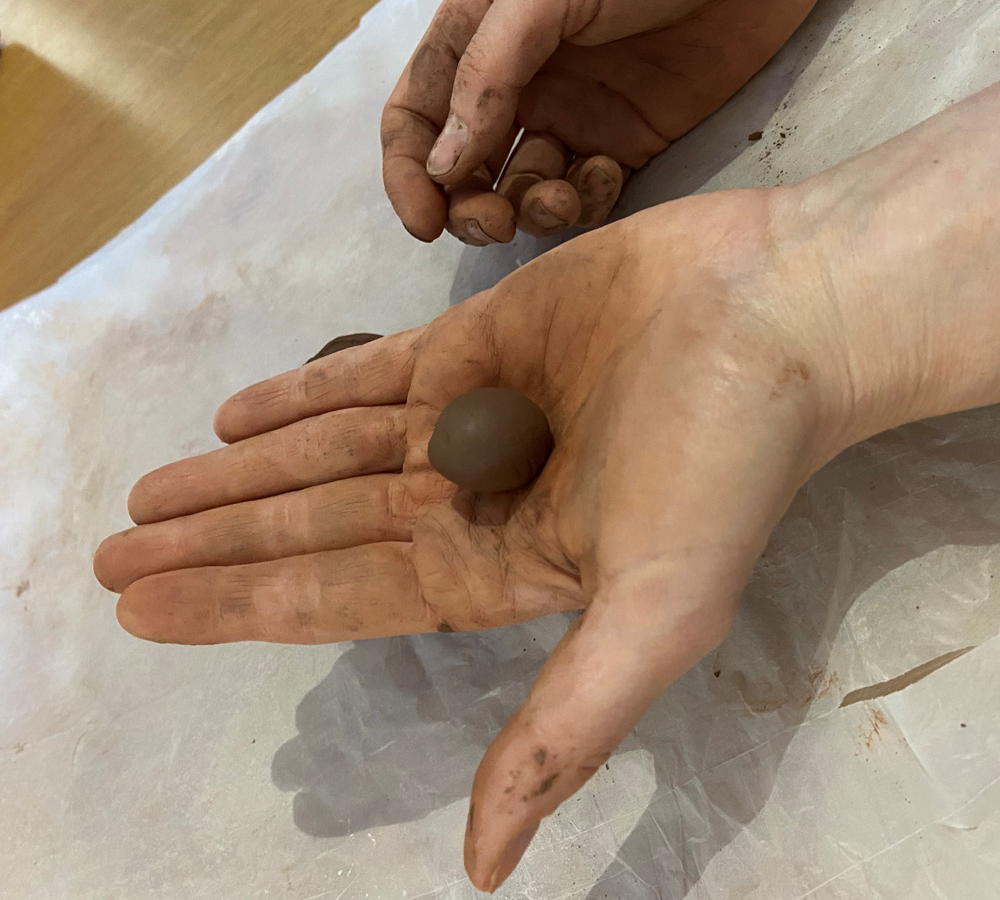
2) Roll the first ball into a cone shape.
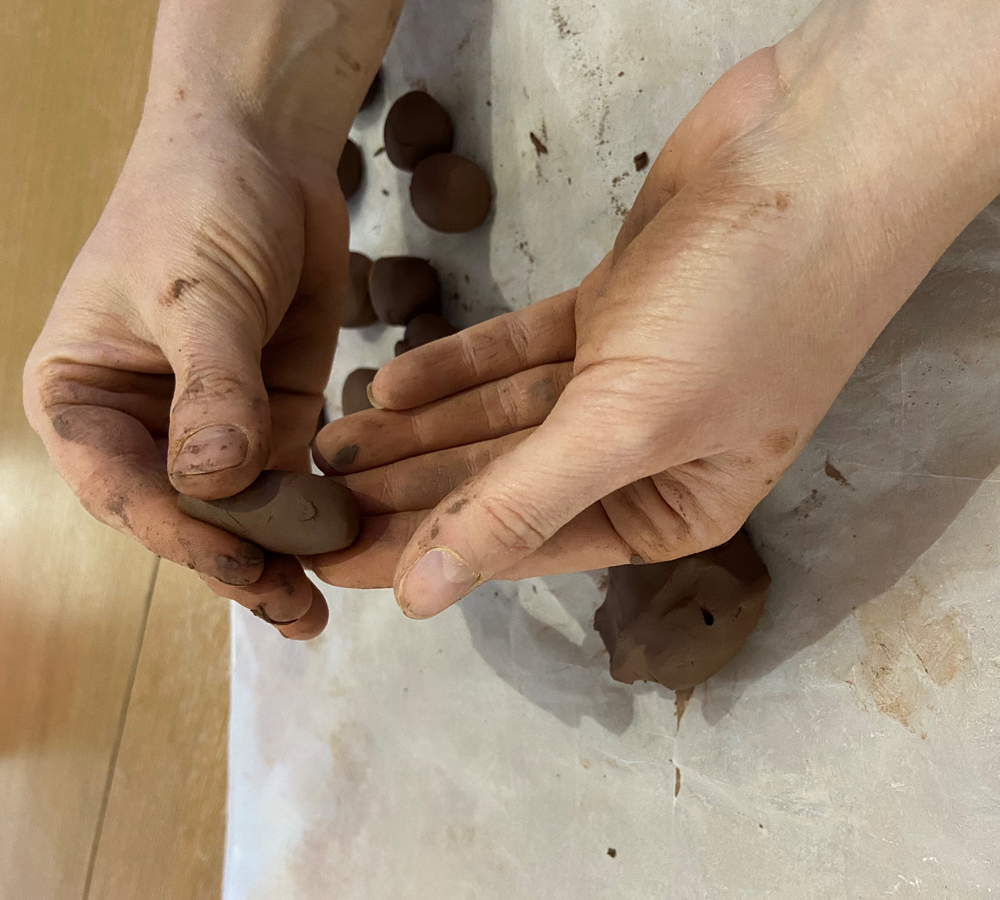
3) this will be the centre of you rose and
base for the following petals.
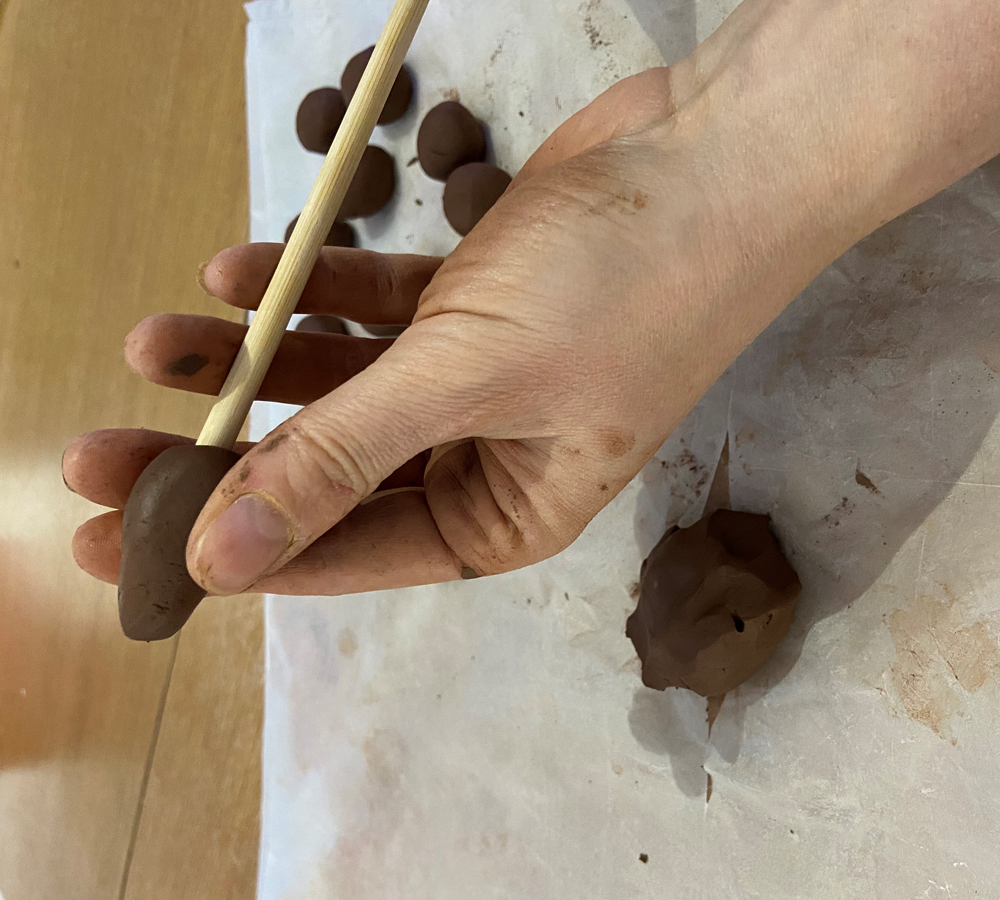
4) Gently push the cone onto the end of a
wooden dowel or chopstick.
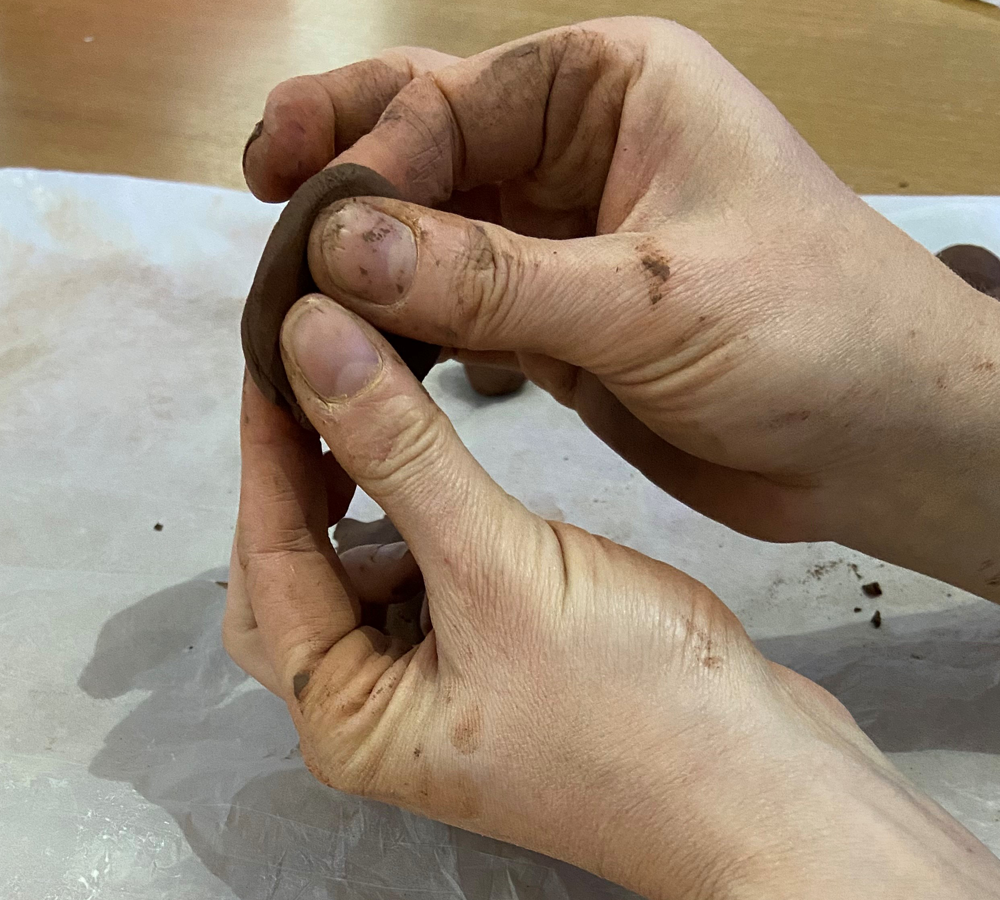
5) Push the dowel into a cardboard box to
allow you to work on the rose with both hands.
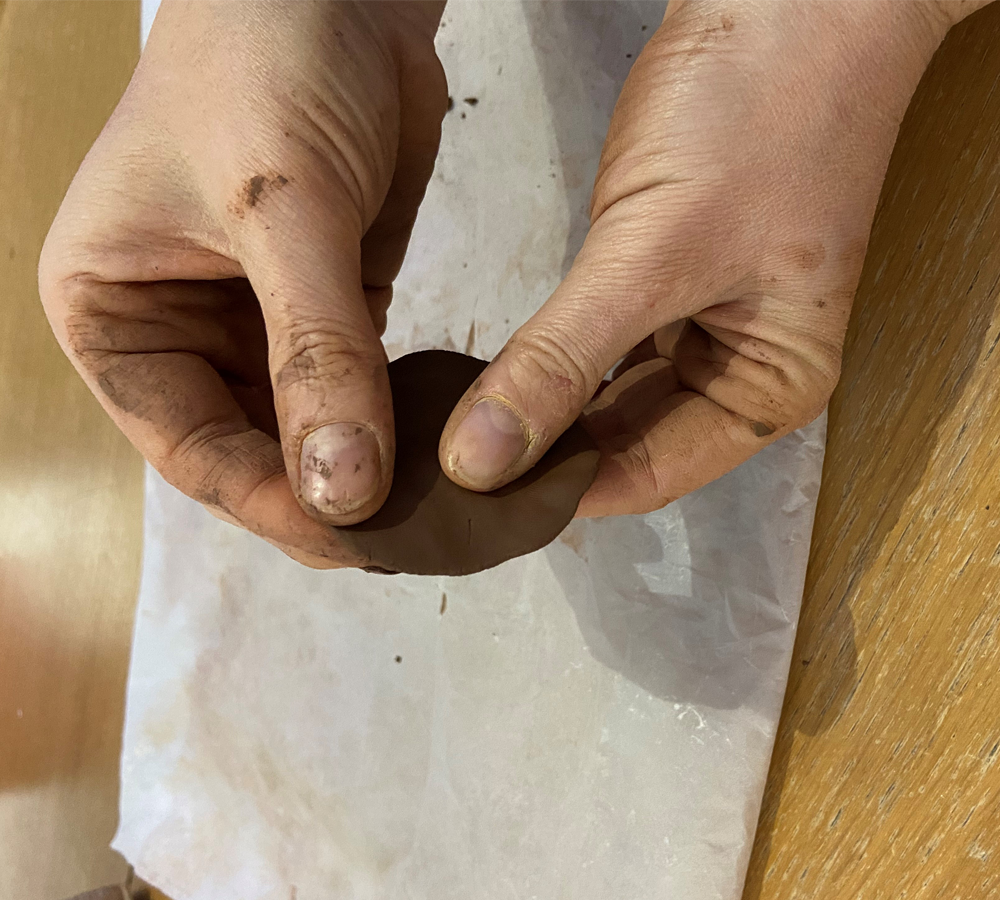
6) Take one of the balls of clay and starting
in the middle, gently flatten it out to form
the first petal.
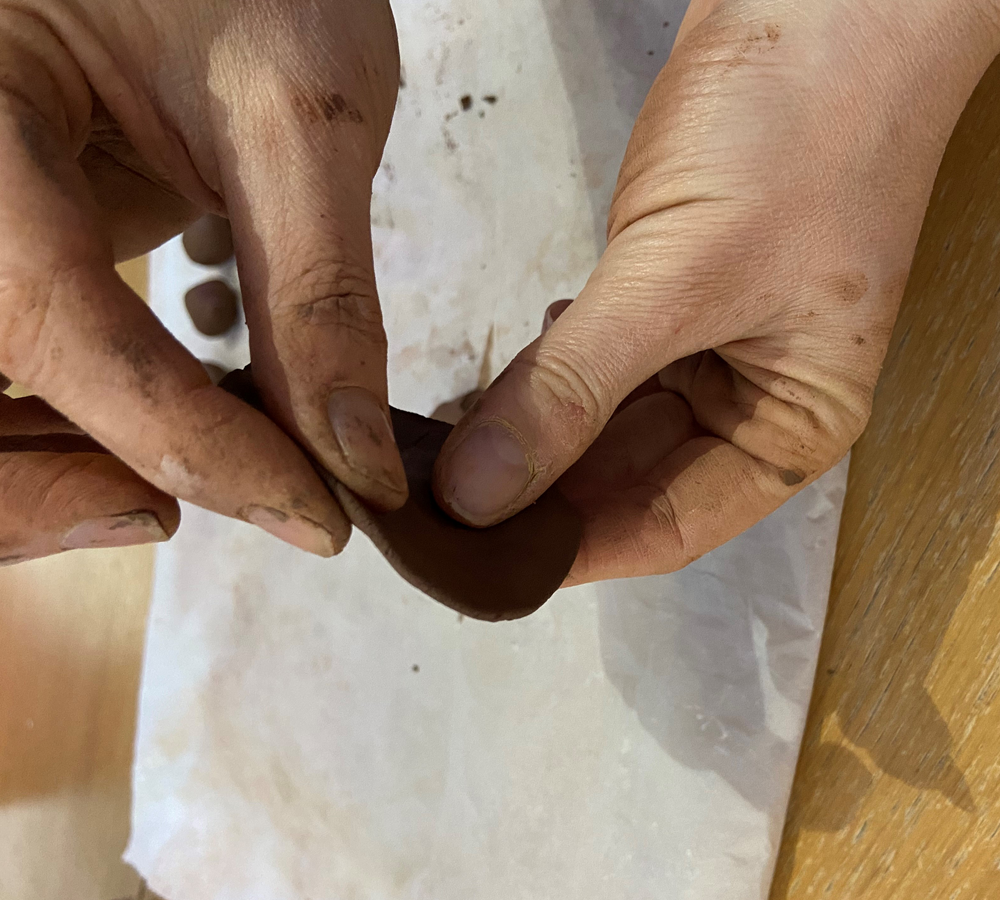
7) make sure it is even all over and edges
are delicately thin.
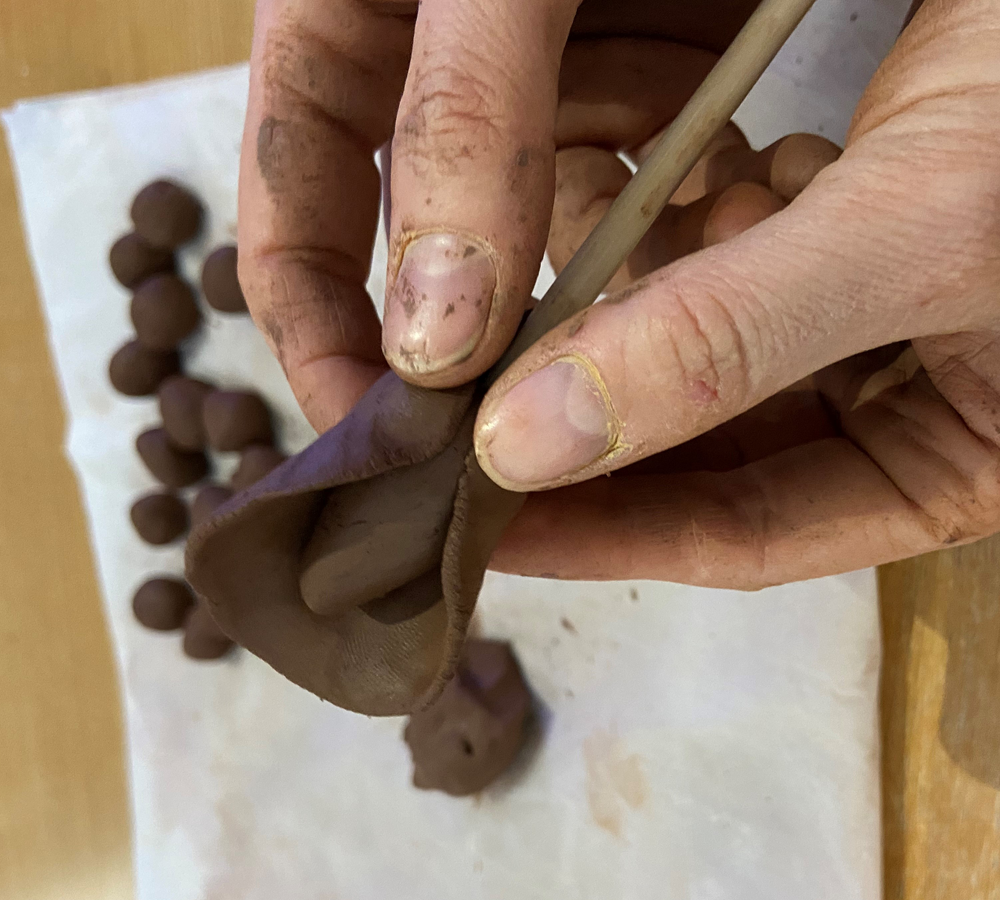
8) Wrap the petal around the centre cone,
smoothing the clay at the base.
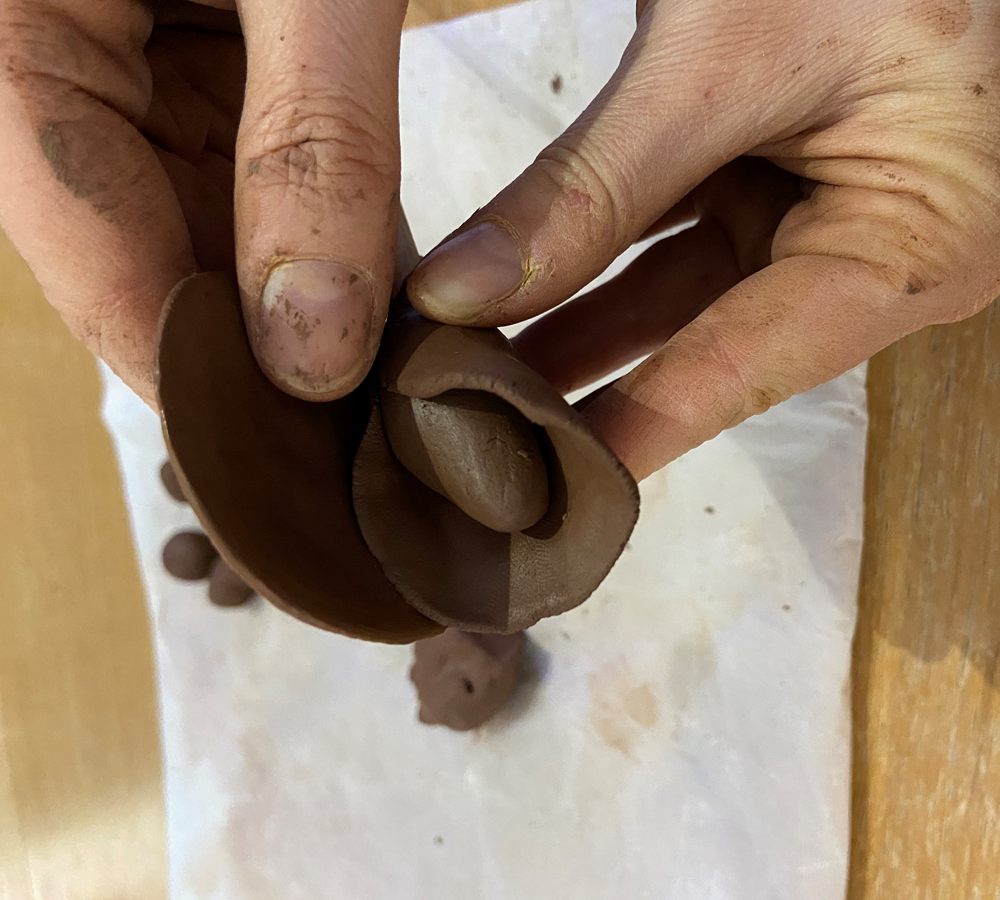
9) Using the same technique make the second
petal and wrap it around the opposite side of
the cone.
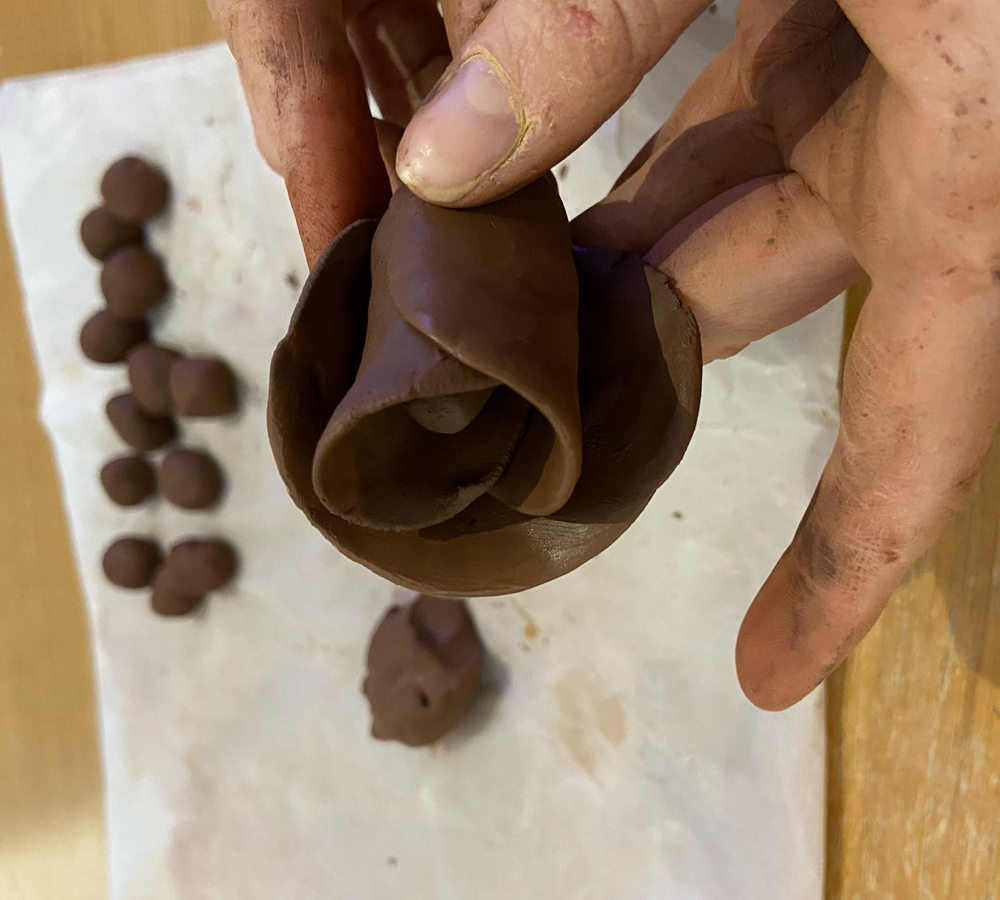
10) Make the third petal and place it over
the edges of where the first and second
petal meet, smoothing at the bottom each
time a petal is added.
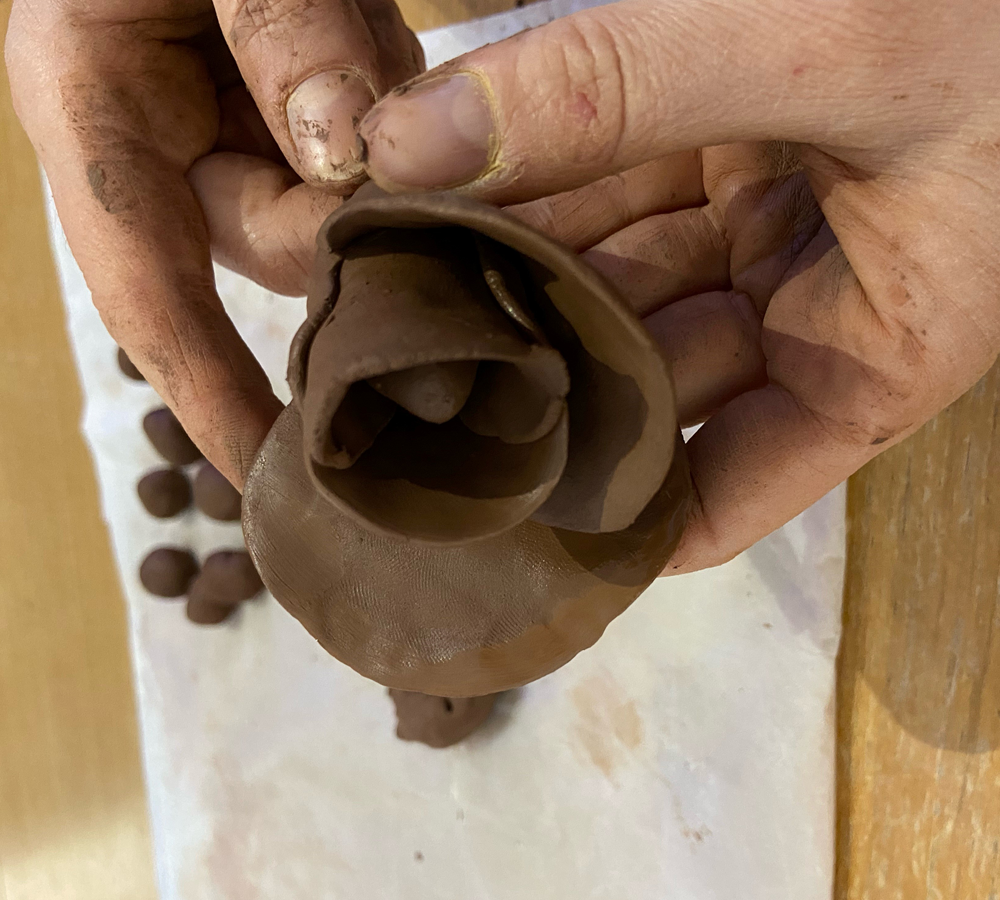
11) Continue making the petals in the same
way, if they become dry or cracked around
the edges gently smooth over them with a
wet finger.
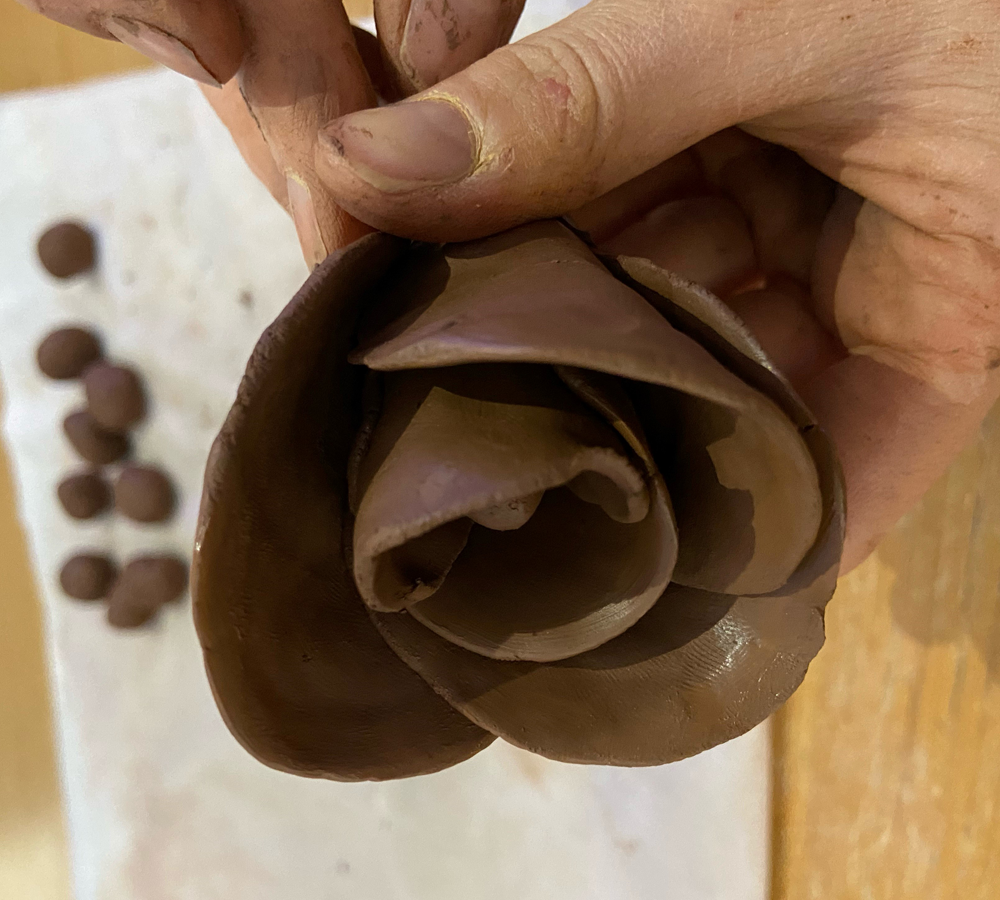
12) Each petal should now slightly overlap
the petal before it. As the rows continue
start to shape the petal away from the
centre. Stop adding petals once the rose
looks natural.

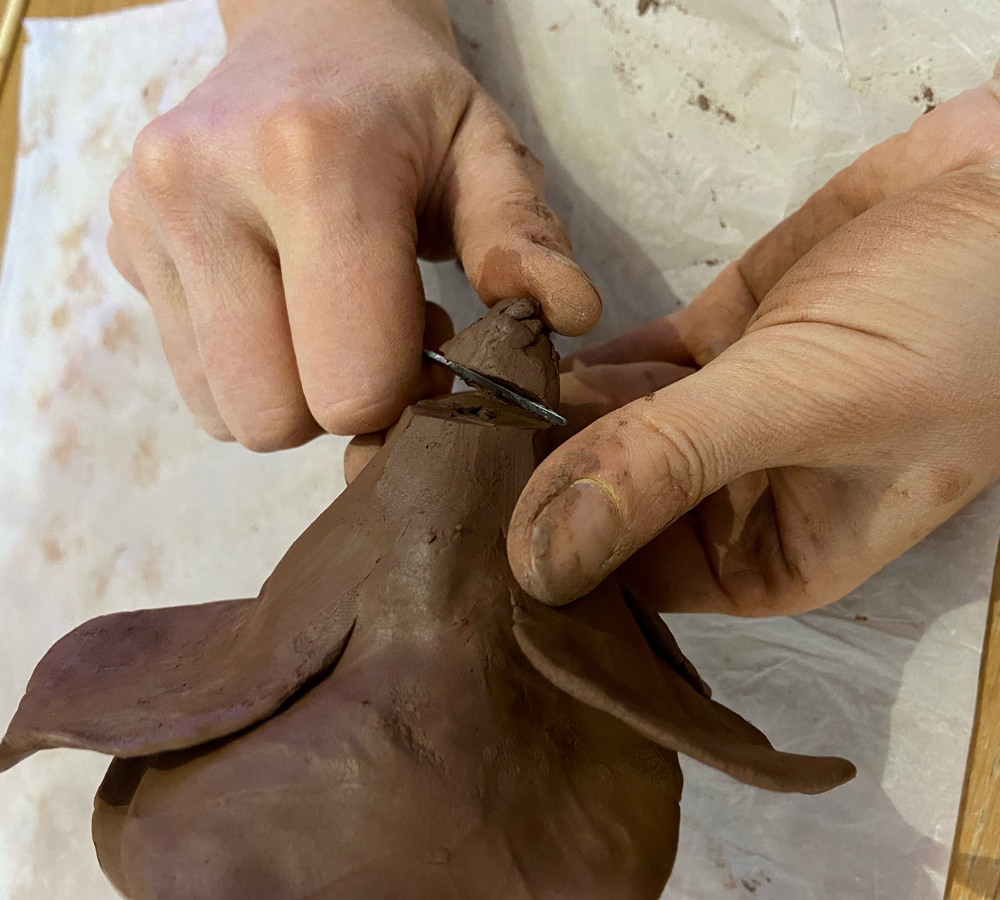
13) Remove the dowel and trim the base
(leaving enough for the rose to sit on the
dowel again for drying) make sure its flat
as it will need to stand up on its own for
the glaze firing).

14) Once dried, bisque fire at 1100°C. then,
glaze using 2-3 coats of Vitraglaze
earthenware glazes.
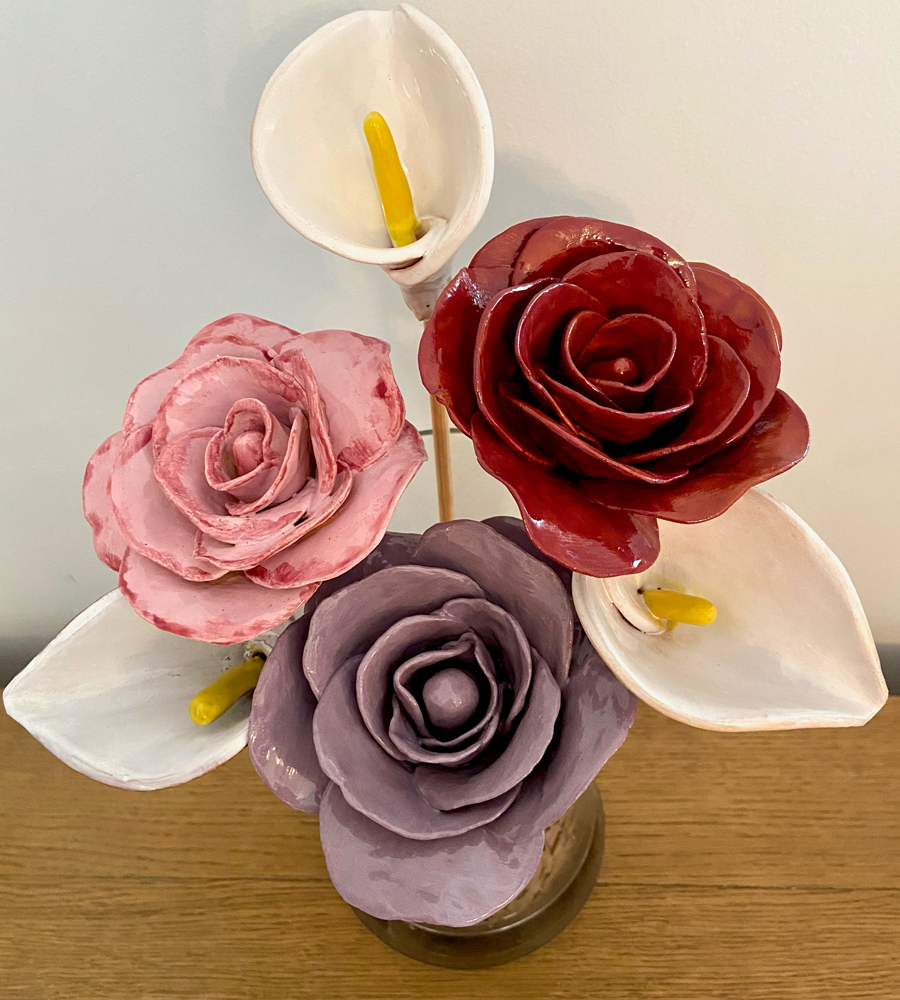
15) Attach glazed flower to wooden dowels
using a strong all purpose glue or superglue.
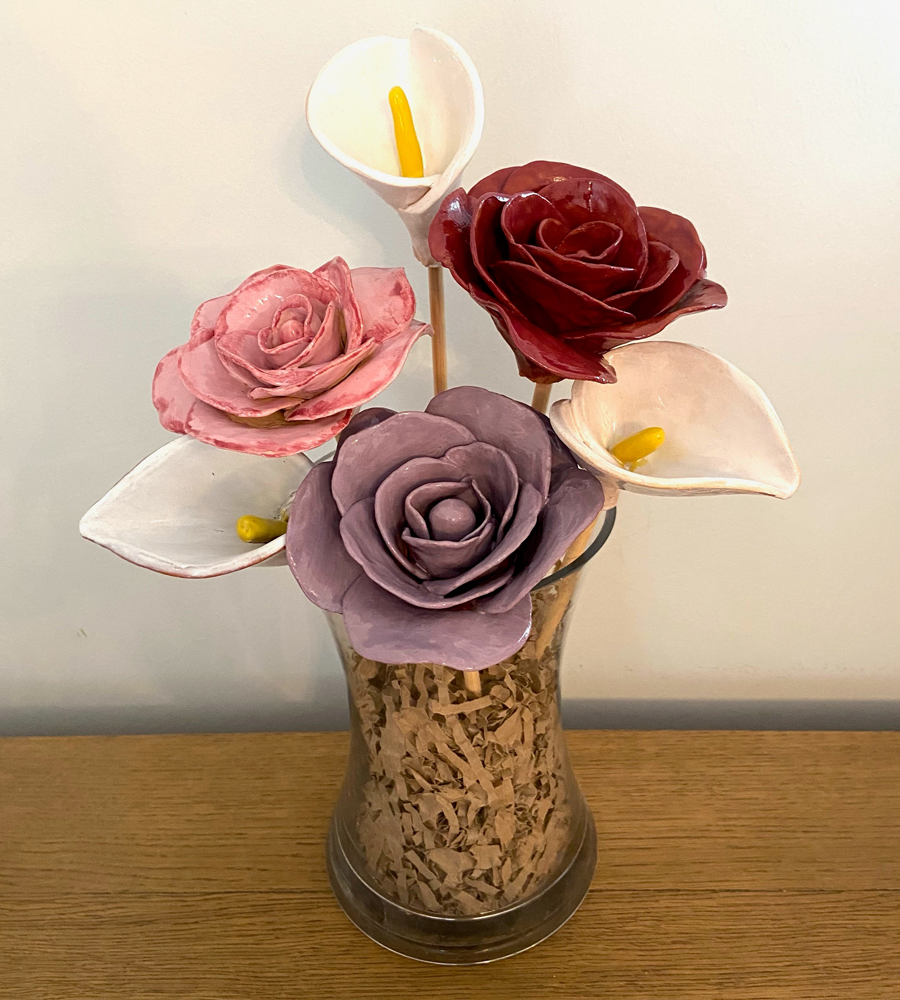
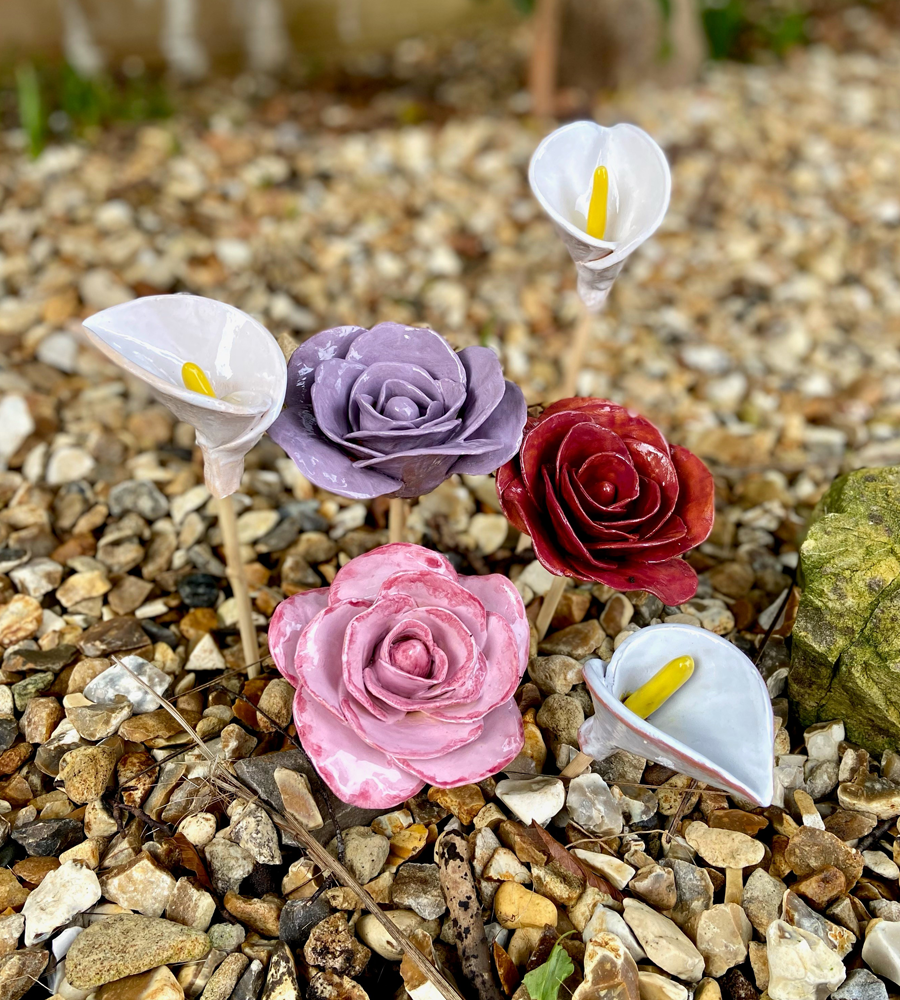
We Used
VitraGlaze Earthenware: Pink Blush
